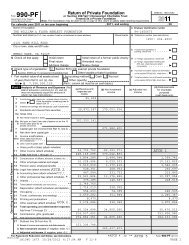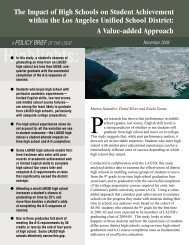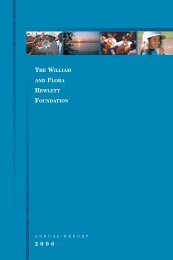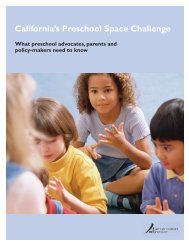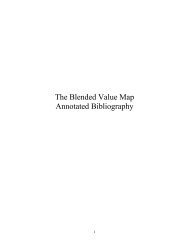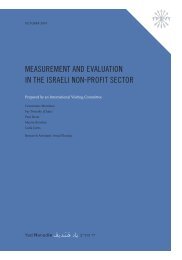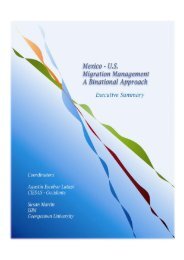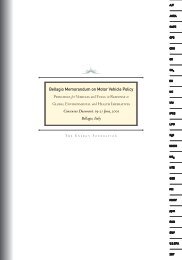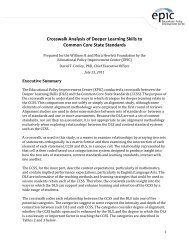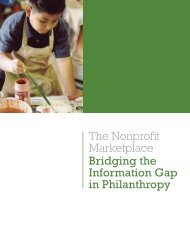EDUCATION FOR LIFE AND WORK - Hewlett Foundation
EDUCATION FOR LIFE AND WORK - Hewlett Foundation
EDUCATION FOR LIFE AND WORK - Hewlett Foundation
You also want an ePaper? Increase the reach of your titles
YUMPU automatically turns print PDFs into web optimized ePapers that Google loves.
Education for Life and Work: Developing Transferable Knowledge and Skills in the 21st Century<br />
28 <strong>EDUCATION</strong> <strong>FOR</strong> <strong>LIFE</strong> <strong>AND</strong> <strong>WORK</strong><br />
• Crystallized intelligence (verbal comprehension, foreign language<br />
aptitude, communication ability, listening ability, and the ability to<br />
provide missing words in a portion of text)<br />
• Retrieval ability (originality/creativity, the ability to generate ideas,<br />
and fluency of expression in writing and drawing)<br />
• Memory and learning (memory span, recall by association, free<br />
recall, visual memory, and learning ability)<br />
• Broad visual perception (visualization, spatial relations, speed<br />
in perceiving and comparing images, and mental processing of<br />
images)<br />
• Broad auditory perception (hearing and speech, sound discrimination,<br />
and memory for sound patterns)<br />
• Broad cognitive speediness (rate of test taking [tempo] and facility<br />
with numbers)<br />
• Reaction time (computer) (simple reaction time to respond to a<br />
stimulus, reaction time to choose and make an appropriate response<br />
to a stimulus, and semantic retrieval of general knowledge)<br />
We focused the content analysis on the first three factors—fluid intelligence,<br />
crystallized intelligence, and retrieval ability—because the primary<br />
abilities they included were most closely related to the 21st century skills<br />
discussed in the reports and documents. It is important to note that our<br />
content analysis did not address how valuable any of the 21st century<br />
skills may be for influencing later success in employment, education, or<br />
other life arenas. To carry out the content analysis we simply took lists of<br />
competencies that other individuals and groups have proposed are valuable<br />
and aligned them with research-based taxonomies of cognitive and<br />
noncognitive competencies. In the following chapter, we discuss research<br />
on the relationship between various competencies and later education and<br />
employment outcomes.<br />
Personality Taxonomy<br />
For the past two decades, the “big five” model of personality has been<br />
widely accepted as a way to characterize competencies in the interpersonal<br />
and intrapersonal domains (McCrae and Costa, 1987; Goldberg, 1993).<br />
It is based on the lexical hypothesis, which suggests that language evolves<br />
to characterize the most salient dimensions of human behavior, and so by<br />
analyzing language and the way we use it to describe ourselves or others<br />
it is possible to identify the fundamental ways in which people differ from<br />
one another (Allport and Odbert, 1936). Based on a review of English<br />
dictionaries, psychologists identified personality-describing adjectives and<br />
developed many instruments to measure these characteristics. Multiple,<br />
Copyright © National Academy of Sciences. All rights reserved.




